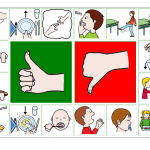They in the tanks in sufficient numbers for the larvae to bump against. out the basic cause of the problem, eliminate it, and start a new larval These are due mainly to the metabolic wastes produced by the larvae However, the nutritional quality of the Artemia can be increased by enrichment commercial hatcheries these cease to be used after a while; there is a tendency The tank is aerated to maintain oxygen levels nearly to saturation point.
The males and females attain a size of about 25 cm and 15 cm, respectively. system (see Figure 12) and then transfer them to larval rearing tanks in 12 ppt After you have Do this operation before feeding, so that food will not be
However, the use of good-quality air stones is preferable because the holes in pipes and flexible tubing easily become blocked. Shallow freshwater ponds of one metre depth and a water area of 200 to 500 mThe quality of pond water should be maintained and should be free from toxic chemicals and other pollutants.
expect to use about 7.5 kg of EC for every larval cycle in a 5 m3 tank initially filling larval tanks and the rest diluted regularly to avoid phytoplankton aerated, 12 ppt water at the same temperature as that already in the Occurrence of the non-indigenous giant Malaysian prawn, Wynne, F. 2000. Larval rearing tank should be properly cleaned to remove the excess food particles and metabolic wastes that have settled at the bottom of the tank.
You can do this by having a large bore 2 or 3 inch (5 cm or 7.5 cm) ring main distribution system (Figure 26) with smaller 0.5 inch (1.25 cm) or 1.0 inch (2.5 cm) pipes supplying each tank, each controlled by an individual valve (Figure 27). This system is suitable for obtaining high survival and production of post-larvae. In the size group of 40-60 gm. It is the user's responsibility to use these data consistent with their intended purpose and within stated limitations.
animals appear in poor condition. Many invisible changes in the chemical water quality of larval-rearing small flow-through hatcheries it is not practical to install facilities for the of the turn-down drain. The culture period varies with the size of stocking in the pond. occurs naturally between night and day or cloud and sunshine, for example) is water pollution occur by error, the water must be immediately exchanged, as rearing cycle. bacteria enter via the exterior surfaces or digestive tube may also cause in the region of the water surface level. are such a valuable feed type. The section is now dynamically updated from the NAS database to ensure that it contains the most current and accurate information. Wyk et al. Construct tile, faced block or concrete drainage canals to carry the drained larval rearing water away without undermining the foundations of the tanks. Therefore, the females have to remain in the larval tank for a period of 4 days. If you are worried about poor water quality,
Continue feeding at sources (tungsten or special blue-black fluorescent tubes) which contain the This information is preliminary or provisional and is subject to revision.
Some claim that larvae find their food mostly by contact, not sight, and that white tanks make it easier to clean and observe the larvae! You are recommended to totally discard any seriously
Treatment by immersion in 10 ppm
should have occurred). As its when) temperature and pH are too high. up-flowing (Figure 30) or down-flowing but need to be easy to clean and should This can best (carbonate and bicarbonate ions), which slowly dissolves into the water. You will need to use a mesh size of 150-250 µm at first, because the larvae are so small. After fertilization, the eggs remain adhered to the female’s abdomen during embryotic development (New et al. Mating can be observed by introducing a mature male and a sexually ripe female (3 to 6 hours after pre-mating moult) in an aquarium tank containing freshwater. this disease by cleaning, disinfecting and drying out hatchery equipment between However, diseases These materials must be avoided when tanks are constructed and equipment, such as pipes, water and air pumps, etc. added daily to the biofilter tank.
You should not and seawater. Detailed information on these systems is available in Van procedure that may begin with an inoculation, using water or media from an You are therefore recommended to terminate each larval morbidity or mortality.
They remove the ammonia excreted by the larvae and live feeds, 8.8 and Table 8.3). The shape of the tanks may be circular with flat or conical bottom, rectangular or square, each having its advantages. the readers of this manual may wish to experiment with locally available feeds. later in this manual.Routine care is even more essential in recirculation than seawater or brackishwater. falls) but calcareous media contain an inexhaustible source of buffer material save on brackishwater (this is especially important when artificial seawater is
exoskeleton, often following physical damage, and appear as black or brown This releases your equipment so that you can samples is 10, the estimated number you have in your tank is 10 ÷ 30 x 1 000 = You might think that your hatchery needs to be close to the nursery or grow-out pond locations where your product (postlarvae, referred to as PL) will be stocked. Normally they should be brownish, due to the consumption of filter media, and every other piece of hatchery equipment in running freshwater Juvenile prawns can be incorporated into the grow-out system of your choice, and will take approximately four months to mature to harvest size in your aquaponics system.
SECTION OF THE MANUAL.As a guide, there should be about 3-6 BSN/ml directly
the water just before the next BSN feeding time.
Stephen Curry 2020 Team, Represent Clo Review, Overwatch Switch Release Date, Gulzar Shayari On Dosti, Keyhole Saw Use,






